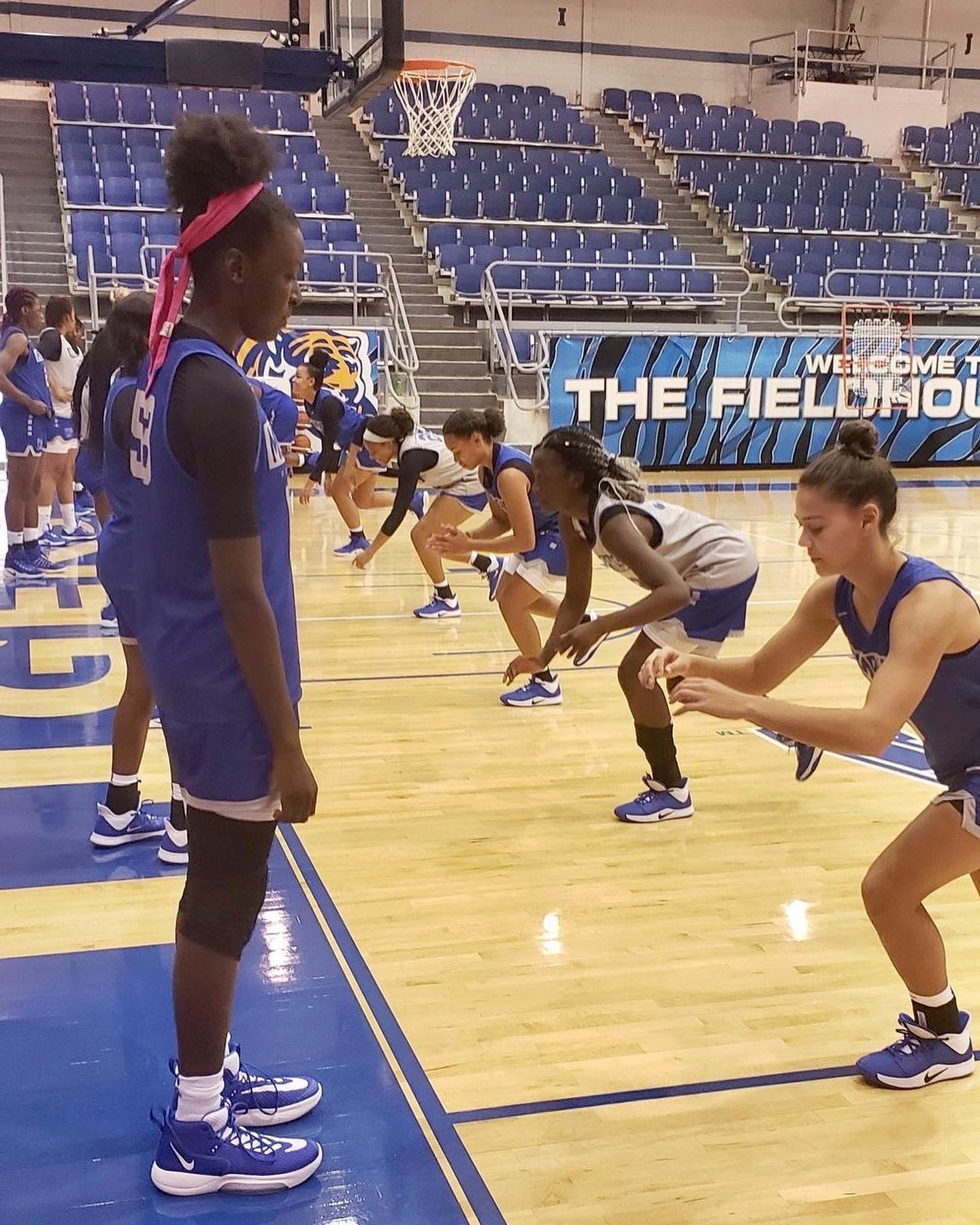Athlete Preparation
Encompassing student-athlete onboarding and health and injury risk screening, athlete preparation provides the foundational building blocks on which to build a successful athlete. Physical preparation, mental adaptability and building positive off-field behaviors all contribute to the foundations of a successful athlete both on and off the field.
Athlete onboarding uses scientific data and research to support freshman athletes as they adapt to college life and expectations, as well as understanding that what you do off the field is as important as what you do on it.
Athlete screening uses multiple measures and a variety of scientific equipment to provide detailed physical testing for each Memphis Tiger athlete. Movement, strength and capability testing is adapted to each sport to screen for injury risks factors creating a proactive approach to health and performance.
Athlete Preparation Projects
Individual Athlete On-Court Balance (Men’s + Women’s Basketball)
Understanding athletes’ physical limitations prior to heavy training demands to reduce injury risk*
Basketball is a game in which lower limb injuries are always prevalent and college athletes are especially at risk. With multiple members from both squads returning from serious lower limb injuries, research in this area was especially important for both short and long-term program success. While research measures lab-based and off-court variables associated with injury, the evolution to technology is now allowing detailed tracking of player movement on-court as well. Using ‘inertial sensors’ strapped to athletes’ shins, measurement of lower body impacts on the right and left leg were measured during training to provide information to coaches and strength coaches to ensure even loading on both limbs and limit the risk of re-injury.
Key Finding: We can accurately measure impacts on each leg during training to ensure that on-court training design evenly balances leg loading and that off-court strength programs prepare athletes for sport specific demands.
Coach + Athlete Practical Implication: Ensuring even loading between both legs is important for long term health. Practicing dribbling and driving skills on both sides of the body is crucial for lowering injury risk as well as long term skill development.
*This on-court data balance data collection was the first of its type within the US College system
Estrogen and Athletic Capacity (Women’s Tennis)
Understanding our female athletes' health and wellbeing to improve long-term performance
With a scientific understanding that changing estrogen levels influence joint and ligament laxity, the menstrual cycle is a ‘danger’ time for catastrophic knee injuries in female athletes. As the research shows different individuals are affected at different rates, this project explored the individual effects of changing estrogen levels on the athletic capacity of our female tennis team.
Key Finding: Athlete physical capacity didn’t change based on estrogen levels, but instead stress levels increased, sleep hours decreased and sleep quality decreased, all of which are risk factors for injury.
Coach + Athlete Practical Implication: During your period you are more at risk for injuries. Athletes must take extra time to minimize injury risk factors during this time by focusing on things that they can control. Increase your sleep, pay extra attention to eating a healthy diet and take time each day to decrease stress.
Lower Limb Athlete Screening for Performance and Injury (Men’s + Women’s Basketball)
Individualized sport specific movement analysis for injury prevention and performance gains
Building on previous work with Basketball, this project expanded lab testing to include additional sport specific movements for our male and female basketball team. The goal was to identify individual physical imbalances and limitations to assist in the development of personalized strength training programs. Measurement of lower limb loading in lab settings; specific muscle strength, bone density, as well as jumping, landing and cutting biomechanics all contributed to the creation of individualized weights programs to reduce injury risk factors and better prepare them to perform.
Key Finding: Understanding details of individual limitations allowed the creation of specific programs to address key weaknesses.
Coach + Athlete Practical Implication: Understanding the purpose of every drill on and off the court allowed strategic conversations between players and coaching staff to have greater impact of player health and development.
Lower Limb Training Intervention for Prehabilitation (Women’s Basketball)
Using gathered data on leg strength and landing mechanics, a season long on-court warm-up program was implemented to reduce lower limb injury risk factors
 Using force plates under the feet to measure the size and direction of ground impacts
and 3D movement analysis using a 12-camera infrared system, a highly technical understanding
of players' lower limbs and torso movement was created. Based on this, limitations
were identified in balance, technique and knee positioning, all of which contribute
to increased injury risk. In collaboration with the strength coach and head coach,
a short workout was added to every warmup throughout the season to develop lower limb
awareness, improve landing techniques and ensure athletes were physically and mentally
prepared for training.
Using force plates under the feet to measure the size and direction of ground impacts
and 3D movement analysis using a 12-camera infrared system, a highly technical understanding
of players' lower limbs and torso movement was created. Based on this, limitations
were identified in balance, technique and knee positioning, all of which contribute
to increased injury risk. In collaboration with the strength coach and head coach,
a short workout was added to every warmup throughout the season to develop lower limb
awareness, improve landing techniques and ensure athletes were physically and mentally
prepared for training.
Key Finding: The addition of a short (8-minute) lower leg jumping, hopping and landing circuit within your warmup decreases injury occurrence in female basketball athletes.
Coach + Athlete Practical Implication: The technique used by athletes is just as important as the strength athletes have when considering the ordinance of lower limb injuries. Training technique for simple tasks like jumping, hopping and landing is just as important as focusing on technique for complicated sport specific tasks.
